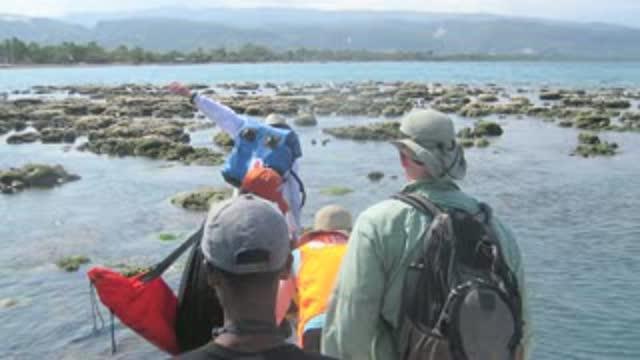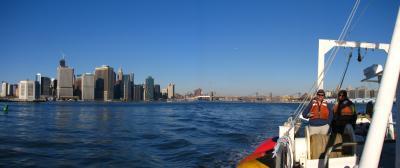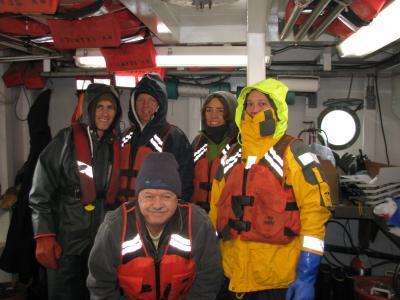"The shape of the bedforms that make up the barrier system did not change a whole lot," said co-Principal Investigator (PI) John Goff of the Institute for Geophysics. "Where we might have expected to see significant erosion based on long-term history, not a lot happened — nothing that ate into the shoreface."
"The sand largely took the blow," added co-PI Jamie Austin of the Institute for Geophysics. "Like a good barricade, the barrier system absorbed the significant blow, but held."
This was not the case in other storm-ravaged zones the Texas team has surveyed. When Hurricane Ike hit Galveston in 2008, the storm significantly disrupted the thin finer-grained sediment layer offshore, removing material underneath the shoreline in a way that exacerbated long-term problems of erosion.
Compared to Galveston, Long Island has a greater abundance of sand in its overall system. The storm churned up much of this sand and moved bedforms, but the scientists speculate that the greater abundance of sand helped the offshore barriers maintain their overall shape and integrity as erosional barriers.
Tempering this good news, the survey team also found evidence the storm brought new pollutants into the waters off Long Island. Heavy metals were detected in a layer of mud that the storm deposited offshore. Beth Christensen of Adelphi University traced the metals back to muds from the South Shore Estuary Reserve, which has a long history of pollution from industry and human habitation.
By this summer, natural forces had dispersed the layer of mud offshore, and the concentrations of toxins were not high enough to be an immediate concern, said Christensen.

In the aftermath of Hurricane Sandy, scientists from the University of Texas at Austin's Institute for Geophysics, with colleagues from Adelphi University, Stony Brook University and other institutions, surveyed the offshore and nearshore sediments around Long Island to assess the health of the region's barrier sediments and their long-term ability to protect New York and Long Island from the impacts of future storms. Funding was provided by the Jackson School of Geosciences at the University of Texas at Austin, which has a strategic focus on sending geoscientists to the scenes of natural disasters to help society mitigage the impacts of major events like hurricanes, tsunamis and earthquakes.
(Photo Credit: Jackson School of Geosciences, The University of Texas at Austin)
"But if we continue to see more events like Sandy, we'll see the introduction of more and more muds from the estuary," said Christensen, "adding additional toxins to an already stressed system."
Continued sea-level rise will also create more pressure on the barrier system, heightening problems onshore. With higher sea level, all of the onshore impacts of a storm like Sandy will go up, notes Goff.
"In the long-term, if sea level gets high enough, the barrier system has no choice but to retreat and move landwards," said Goff, exposing the shoreline to increased erosion. "But at least for the present, there's no evidence of that being imminent."
The mission was the sixth rapid response science mission funded by the Jackson School of Geosciences at The University of Texas at Austin. (The Institute for Geophysics is a research unit within the Jackson School.) The missions place geoscientists on the scenes of natural disasters as quickly as possible to measure the often vanishing traces of hurricanes, earthquakes, tsunamis and other disasters.
"The faster we get out into the field to measure Earth's response to naturally destructive events, the better we can relate data to the disasters," said Austin.

This is John Goff of the University of Texas Institute for Geophysics and Beth Christensen of Adelphi University on Stony Brook University's R/V Seawolf outside Manhattan shipping out to the sites of their offshore survey, January 2013.
(Photo Credit: The University of Texas Institute for Geophysics.)

Left to right: Brian Gagliardi (Stony Brook University), Steffen Sastrup (UTIG), Beth Christensen (Adelphi University), Cassandra Browne (UT Austin), and Jamie Austin (UTIG) seek warmth in the cabin of Stony Brook University's R/V Seawolf during their January 2013 marine geophysical survey of the barrier sediment system offshore Long Island.
(Photo Credit: University of Texas Institute for Geophysics.)
Source: University of Texas at Austin